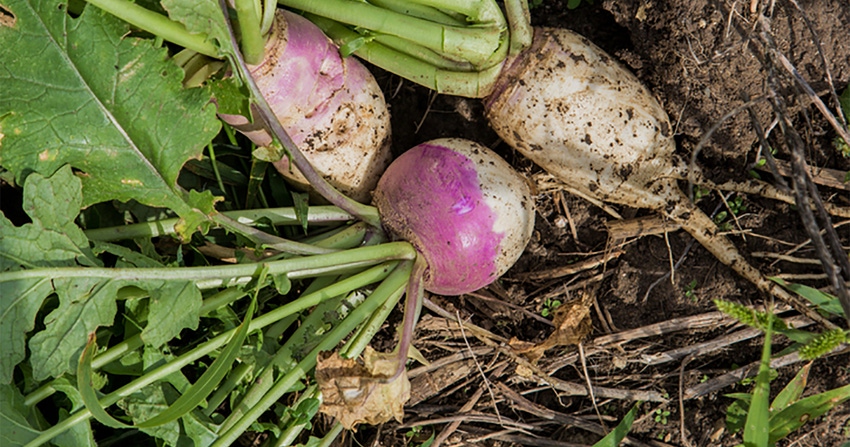July 26, 2022

Turnips drew national attention during the presidency of native Missourian Harry S. Truman.
“Evidently, the congressional session of 1948 was a particularly argumentative one, with the GOP-dominated Congress refusing to pass any of President Truman’s initiatives,” said University of Missouri Extension horticulturist David Trinklein.
In response, the president called a special session of the 80th Congress. It was to begin, Truman said, “on what we in Missouri call Turnip Day — July 26.” The term comes from an old Missouri saying: “On the 26th of July, sow your turnips, wet or dry.”
Little significant legislation passed during the 11-day “Turnip Session,” but it helped remind the public that late July is a good time to plant turnips, at least in Missouri, Trinklein said.
Important crop
Turnip has been grown since prehistoric times. It was an important crop in ancient Greece and classical Rome. French explorer Jacques Cartier is credited for bringing turnip to America in 1541.
Turnip is a biennial plant. It grows a large storage (overwintering) root during the first year. In the second year, it flowers, bears seeds and dies.
Turnip prefers cooler conditions, Trinklein said. Hot weather makes the roots fibrous and pungent. Gardeners often plant turnip as a succession crop. It also makes a good companion for corn.
Like most root crops, turnip prefers light soils. Heavy clay soils can result in slow-growing, poorly shaped roots. Fertilize turnip in its early stages. Apply a pound of 5-10-5 garden fertilizer for each 100 square feet of soil, Trinklein said. Turnip may not need additional fertilizer if planted following a crop that did well.
“In this sense, turnip is a good ‘cleanup’ crop to make full use of fertilizer applied to the garden during a growing season,” Trinklein said.
Planting seed
Broadcast turnip seeds over soil or plant in rows 12 to15 inches apart. Lightly cover seeds with soil. “If seeds are broadcast over the soil’s surface, a light raking after planting usually is sufficient to cover them,” he said. Water lightly until seeds germinate.
Crop rotation helps prevent common pest and disease problems.
Harvesting and storage varies, Trinklein said. Some gardeners pull leaves and roots when roots are about 2 inches in diameter and bind them in a bunch. But if harvesting roots only, wait until they are at least 3 inches in diameter.
Turnip can withstand freezing temperatures. However, harvest before soil freezes to avoid cracks and decay, Trinklein said.
If you have room, store turnip roots in refrigerators at slightly above freezing (32-35 F). For large amounts, consider an unheated basement or outdoor pit. To store turnips outdoors, bury them in a waterproof container placed in a slanted position. Put the lid on lightly to allow air to circulate. Cover with straw and a thin layer of soil.
Varieties that grow well in Missouri include “Purple Top White Globe,” which produces edible 4-inch roots about 60 days after seeding. “Tokyo Cross,” a faster-maturing variety, produces 2-inch roots in 30 days. Another Missouri favorite, “Golden Ball,” needs 70 days to produce sweet and flavorful golden-yellow roots.
Source: University of Missouri, which is solely responsible for the information provided and is wholly owned by the source. Informa Business Media and all its subsidiaries are not responsible for any of the content contained in this information asset.
You May Also Like




